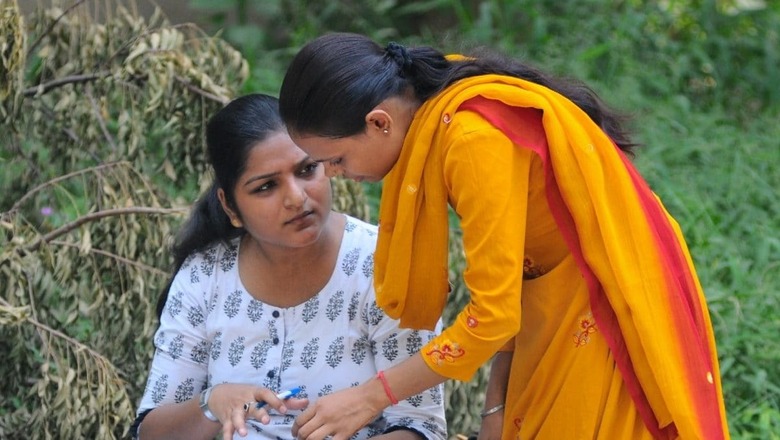
views
Women, who constitute a significant share of India’s total population, are considered to be the backbone of India’s economy. According to McKinsey Global, India can potentially add $700 billion to global GDP by increasing women’s participation in the labour force. Coming from indigenous and grassroots communities, they are instrumental in nurturing their communities’ livelihoods as farmers, wage earners and entrepreneurs, as they play a key role in the rural economy as well.
As per IBEF (India Brand Equity Foundation), 20.37 per cent of women are MSME owners and make up for 23.3 per cent of the labour force in India. This means that unless women are not encouraged to pursue entrepreneurship, our economic progress would remain incomplete and impossible.
Not just that, with the launch of Digital India, a flagship programme of the Government of India, the goal of making India a digitally empowered society in the changing digital landscape is also offering tremendous scope for women’s empowerment. Having a technology-led innovative financial ecosystem will go a long way in boosting inclusive growth, reducing income inequality and empowering people, especially women, to be economically able and strong.
Rural Finance Driving Financial Inclusion
Today, the provision of inclusive financial services has become a basic priority in many countries. Leaders of G-20 nations have also emphasised on financial inclusion as a driver for social and economic growth. On the other hand, the Indian government is also creating a robust ecosystem with several schemes. Key initiatives such as the Jan Dhan Yojana, Pradhan Mantri Mudra Yojana, Pradhan Mantri Jeevan Jyoti Bima Yojana, Pradhan Mantri Suraksha Bima Yojana and Atal Pension Yojana have enabled the masses to have bank accounts and loans.
According to the report released by Sa-Dhan, (an RBI recognised Self-Regulatory Organisation (SRO) for microfinance institutions), the loan portfolio of micro-finance institutions (MFI) increased 24 per cent year-on-year (YoY) to Rs 2.75 lakh crore by the end of this June from Rs 2.22 lakh crore a year ago. In addition, microfinance can help low-income households and small businesses to stabilise their income. By starting and expanding their businesses, they are increasing their financial awareness, saving up for their children’s education, building an innate sense of achievement and becoming responsible for their family’s financial well-being.
Just look at the rise in numbers in recent years. Lending to microfinance borrowers, mostly women in rural areas, has increased by 900 per cent in the past six years — from $2 billion in 2012 to $20 billion in 2018, points out the International Finance Corp (IFC), a member of the World Bank Group. This shows that the development of rural finance can go a long way in greater financial inclusion.
Empowering Women Entrepreneurs for Rural Transformation
Since women entrepreneurs have now become an important source of economic growth, the government has come up with initiatives to help women set up their own enterprises easily. These include Bharathiya Mahila Bank Business Loan, Mudra Yojana Scheme, Dena Shakti scheme, Udyogini scheme, Cent Kalyani scheme, Mahila Udyam Nidhi scheme and Women Entrepreneurship platform. Here are some of the benefits that come with financially empowering women:
Brings a shift in mindsets: One of the first challenges in empowering people is not that of financial service delivery, but navigating a particular mindset. Gone are the days when women had to stay behind a ‘ghoonghat’. Today most people in their families and communities are able to view them as worthy of making financial decisions or as an entrepreneur. Starting small businesses gives women affirmation and is an acknowledgment of their role within their families. Once the woman starts making meaningful money, the pendulum begins to swing in her favor. Men respect their wives more when they become successful entrepreneurs. In some cases, it’s the men in the family who need the women to provide access to loans.
For one of our customers named Rina Devi, it all started by taking a loan of Rs 40,000 from us. Successfully running her garment business in a small town in Uttar Pradesh today, she pulled her family out of a crisis when her husband stopped getting work as daily wage earner and resources had started drying up. With the income she generates, not only is she ensuring her child’s education, but has also provided employment to two more people who help her out.
Promotes literacy: The per capita income of the rural population is considerably less than the national one. Moreover, awareness levels are also less due to low literacy rates among the rural population. This makes literacy a necessity since it helps reduce women’s fears and inhibitions around banking and stimulates their interest into becoming active bank customers. Our staff serving 50,000 families across 8 states, have taught numerous women to register their signatures. Learning how to write their name gives a considerable boost to their confidence and self-esteem.
Ensures self-dependence through employment: A number of financial institutions, including an NBFC like ours, are being built with a vision of creating a social impact through a diverse range of tech operations, e-clinics and loan options like MSME loans, micro loans and consumer durable loans. In fact, microfinance has evolved primarily with the purpose of promoting self-reliance and self-employment. When women turn entrepreneurs, it significantly enhances their social status in the family, increases their role in decision-making and reduces their economic dependency on male members.
How NBFCs are steering a cashless rural economy
Currently, there are close to 10,000 NBFCs spread across the country who are addressing some of the key challenges related to financial services for the under-served rural population. However, financial inclusion needs to be a collaborative effort and NBFCs are partnering with emerging fintech companies to create build smarter products and services for customers. Collaboration with fintechs will help NBFCs deepen their market penetration. One such partnership has resulted in the formation of OppLoans, a platform to help pay off debts and open new businesses as part of its commitment to helping millions who are financially underserved.
The government’s Digital India initiative has also contributed significantly to the country’s financial inclusion objective. A digital transformation initiative has a range of benefits for both NBFCs and their network of clients. Using digital technologies, NBFCs are mitigating risks involved in dealing with cash by switching to digital modes of payments. This allows customers to safely make payments through digital channels.
Most of the needs of rural people depend on cash transactions and to introduce the concept of digital payments is a very daunting task since the rural economy is mostly informal or unorganized. There are many misconceptions about banking and daily wage earners must learn its importance. Many fear that they can be cheated or refrained from withdrawing money. But there are several others who are bringing about a positive change in mindset as well.
Among our many customer success stories, Sheila Devi’s experience of going cashless is one such step towards digitalization in rural areas. It made her realise that not only is it a convenient way to save money, but also helps prevent cash theft and fraud schemes involving cash. Moreover, you have proof of bank statements that you paid your installments. Having accessed a loan of Rs 40,000 through our branch in Rajatalab in Uttar Pradesh, Sheila is successfully running a small grocery store and is among the 44,000 women we have served so far.
Innovation in enabling digital payments
While digitalisation has become a buzzword today, the rural banking customers still face challenges in embracing digital payments. The NBFC sector has been at the forefront of digitisation and have digitalised their processes, business functions and lending cycle. NBFCs are proactively expanding their reach to offer their services to the unbanked population with the help of digital tools like eKYC, e-signature, Aadhaar-based verification. Digital financial inclusion will continue to evolve in India and we contribute to the country’s growth journey.
Though the Prime Minister’s vision of Digital India programme has empowered a large part of the population with basic digital literacy skills, it is imperative for the entire population to come under the ambit of digital financial inclusion and become a part of the larger digital economy.
Tech companies too are taking this mission forward and partnering with industry disruptors like NBFCs, fintech organisations and small finance banks. In February this year, Renault India partnered with CSC e-Governance Services (Common Service Centres) to support the Pradhan Mantri Gramin Digital Saksharta Abhiyan (PMGDISHA) programme. It is a scheme that aims to make six crore persons across States/UTs in rural India digitally literate. For this, Renault cars will be deployed across different locations and distribute information on operating computers, digital devices, accessing banking services, websites and making digital payments.
The way ahead
Ever since demonetization came into being, it has been driving India towards a cashless economy. But it is women-led development that will pave way for a self-reliant Bharat, as India cannot have an Atmanirbhar Bharat without making our women Atmanirbhar. In our country which is in its prime phase of digitization, urbanization and innovation, participation of women plays an integral role in the positioning of India on the global stage.
The participation of rural women in the labor force is helping them to become independent at various levels and also leading the way for families to step out of the poverty line. It is pertinent that women are promoted and supported with an increased focus on equality through education and productive employment. Not only does it lead to women empowerment, but also influences financial inclusion and drives sustainable economic growth for Bharat.
(The author is co-founder and CEO at Sugmya Finance)
Read all the Latest Business News, Tax News and Stock Market Updates here


















Comments
0 comment